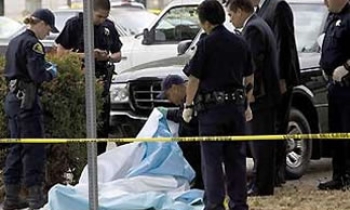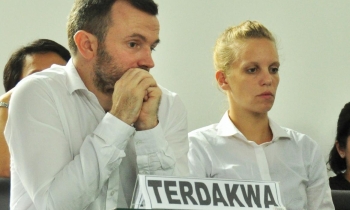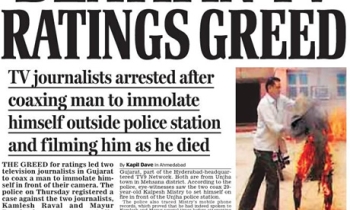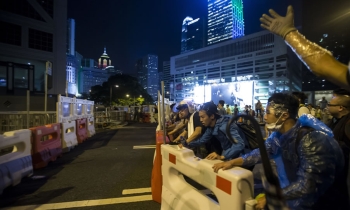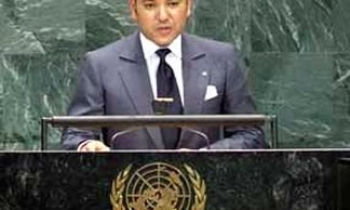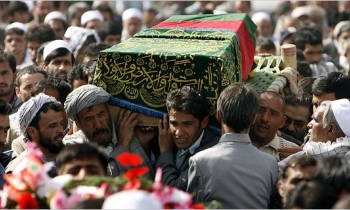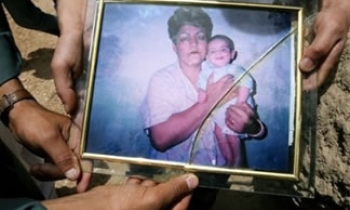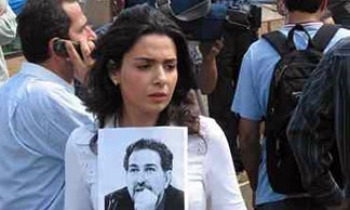The original twelve caricatures of the prophet Mohamed were published on September 30, 2005 by the Danish daily Jyllands Posten. They have now become a major point of discord between the West (interestingly except the US and the UK) and the Muslim world. Why do the "spontaneous" demonstrations of anger and violence witnessed in the Muslim world occur four months after the fact?
It is true that in October some in the Danish Muslim community had demonstrated against the cartoons. Also, at the end of last year, a Danish Muslim delegation went on a road show to Egypt, Saudi Arabia and Qatar to gain international support. But still with the globalization and the web, it’s hard to believe that the outrage in the Muslim world would not have taken place already in October. So why now and who is behind much of the agitation and violence?
The usual suspects: Saudi Arabia, Iran and Syria.
They all have to gain from a major confrontation between the Muslim nation (the Ummah) and the West NOW. It looks like they held off until it was very useful in the geopolitical context. This is not too far-fetched: even a Jordanian sociologist Shaker Naboulci thinks the caricatures are just an excuse. He wrote in the Kuwaiti daily Al Seyassah " The Western stand on the Iranian nuclear program, the victory of Hamas, Hezbollah’s disarmament and the crisis in the Arab world contributed to the explosion of this cartoon odyssey."
In fact, as a brave Algerian editorialist from Le Soir D’Algerie pointed out Saudi Arabia had two major opportunities to start this campaign in December: one was the Hajj (the Pilgrimage which millions of Muslim attend), and the other one was the meeting of the Organization of the Islamic Conference which took place in Riyadh. The Conference adopted a resolution to create an Observatory against Islamophobia citing the example of the Danish cartoons but that was it. One of Saudi King Abdullah’s goals is to unite the Muslims of the World and defend them. This controversy played well in the classical scheme of Muslims being oppressed by the West. That is why the Wahhabi regime took the lead by being the first country to recall its Ambassador in Denmark and starting the boycott of Danish products. Also hardliner Interior Minister Prince Nayef called on international religious institutions and especially the Vatican to step in to defend the Muslims (which by the way the Vatican agreed to do). He added defending the Muslim outcry, "If freedom has reached this degree, I think it is unacceptable no matter what".
The collusion with Iran can be assessed with a phone call between King Abdullah and Iranian President Ahmadinejad reported by the Saudi daily Al Riyadh on February 3. Indeed, Ahmadinejad told Abdullah "the offensive caricatures against the Prophet were done to test the will of Muslims and Islamic countries". He also reminded Abdullah of the major influence that Saudi Arabia and Iran enjoy in the Muslim world regarding regional and international issues. He finally added, "In light of the friendship between our two countries, we hope for more cooperation and coordination to strengthen the solidarity in the Muslim world." Iran has been on a diplomatic offensive in the Arab world in the past few weeks, especially with diplomats visiting Tunisia, Algeria and Syria. Their goal was to gather support for Iran’s nuclear program and prepare a counter offensive against the international community. So, while things were heating up, Iran decided thanks to the cartoons to play the card of the Muslim world oppressed by the West. Also as Emanuele Ottolenghi noted in National Review Online on February 6, it might not be a coincidence that Iran is targeting Denmark now. Indeed, Denmark is going to chair the United Nations Security Council when the issue of nuclear Iran and sanctions is going to be addressed.
Also coincidentally ,violent demonstrations against the Danish embassy in Tehran could not have happened without the support of the mullahs.
The same goes for Syria where the Danish and Norwegian embassies were burned down last weekend and the French one was also targeted. The burning of the Danish consulate on Sunday in Beirut has been blamed by most Lebanese politicians to Syria. It’s not by chance that most of the rioters were Syrian nationals. Syrian president Assad’s strategy is double: first focus his people’s anger on the West rather than on its crumbling regime (interesting to use Islam all of a sudden for the Baathist secular regime) and second get back at the West, in particular France. In fact, Paris has been since the summer of 2004 the diplomatic leader in a campaign to pressure Syria to leave Lebanon and to isolate Assad’s regime.
The head of Hezbollah, the Shia Lebanese terrorist movement supported by Iran and Syria, Sheikh Hassan Nasrallah, is also using the caricatures to gather support against France. In fact, as I showed in a paper published by the Brookings Institution in November, France has turned its back to its cozy relationship with Hezbollah and called for its disarmament. That’s why to fuel the anger of Muslims around the world Nasrallah declared to Al Seyassah, "If Muslims had executed Khomeiny’s fatwa against Salman Rushdie, we would not be here today. Because no one would have ever dared attack the prophet, neither in Denmark, nor in Norway, nor in France." He added, "Hundreds of thousands of Muslims are ready to sacrifice themselves to defend the prophet’s dignity. If we forgive today, God only knows what they can do tomorrow."
This whole cartoons polemic is much more than just about its offensive character and the freedom of the press. It has indeed turned into a geopolitical matter whereby some isolated Arab states try to gather support by playing the religious card and the clash of civilizations. This affair should also be viewed in this context and that’s why for instance as of today almost no Arab government has called for calm. Don’t expect Syria and Iran to volunteer anytime soon.

